Today we will present a table of vaccinations up to one year. What should every parent know about childhood vaccinations? When and what vaccinations will you have to get? How to prepare a child? All this will be discussed further below. In fact, everything is not as difficult as it seems. Every parent should know the vaccination schedule for their children.
Legislative framework
It is important to remember that there is no compulsory vaccination in Russia yet. Despite the importance of the procedure, each parent decides for himself whether to vaccinate the child or not. There are several pieces of legislation behind vaccinations and the operation of the national calendar. More precisely, laws.
When accounting: one year and three years and four months. Given in: three years and four months. Who needs it: Siblings of children who have suppressed immune systems and are susceptible to chickenpox, for example, because they "have cancer treatment" or have had an organ transplant.
Considering: from one year to age. Children receive two doses of chickenpox vaccine four to eight weeks apart. Who needs it: Children and children who are at high risk of exposure to tuberculosis. Including: from birth to 16 years. Who needs it: Children aged six months to two years and persons aged 9 to 17 years who have certain medical conditions or a weakened immune system, which could put them at risk for complications from the flu.
More precisely, every parent will have to familiarize themselves with:
- Federal Law "On Immunoprophylaxis of Infectious Diseases";
- "Fundamentals of the legislation of the Russian Federation on health protection";
- Law "On Sanitary and Epidemiological Welfare".
These documents spell out all the specifics of vaccination, as well as indications/contraindications for procedures, the vaccination calendar and the rights of the population. Every parent will have to know about all this.
Why do you need to have mandatory vaccinations based on age?
Who needs it: Children at high risk of contracting hepatitis B and children born to infected mothers. Table 1: Immunization schedule of the National Immunization Program of the Ministry of Health of Malaysia.
- This vaccine is only available to girls aged 13 years.
- Dose 2 is given 6 months after dose 1.
Immunization should begin at the first visit for children who have a delay in visiting the immunization clinic. Below is a recommended schedule by age for these children. Recommended immunization schedule for vaccines not listed in the National Immunization Program.
What are children vaccinated for under one year of age?
Next, a table of vaccinations up to a year will be presented, which is relevant in Russia today. From year to year they try to refine, supplement, and adjust it. Therefore, all changes must be observed with special care.
So, all children under 12 months in Russia are vaccinated against the following diseases:
Vaccination is a topic for the whole family
The vaccines listed below are available in private hospitals or clinics. Vaccines against infectious diseases are among the most important and effective preventive measures in medicine. Vaccination can reduce or even stop further spread of the disease. The Standing Committee on Vaccination at the Robert Koch Institute in Berlin develops recommendations on which vaccinations should be given at that age. Vaccinations are especially important in infancy and childhood to protect them from infection as quickly as possible.
- tuberculosis;
- hepatitis B;
- whooping cough;
- tetanus;
- diphtheria;
- polio;
- mumps;
- measles;
- rubella;
- hemophilus infection.
In addition, you can additionally be vaccinated against meningococcus, chickenpox and other “childhood” diseases. Today, doctors are trying to vaccinate as many children as possible. However, this topic requires an individual approach. Each child has its own characteristics of the body. They will have to be taken into account when vaccinating. 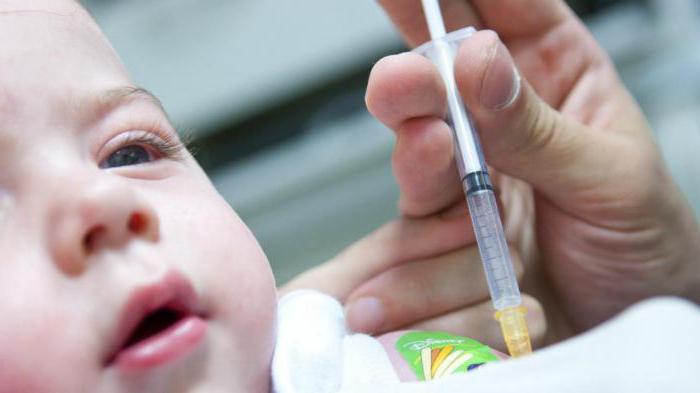
But there are also vaccinations for teenagers and adults that protect against serious illness. Verification of the vaccination certificate should be carried out on a regular basis. Vaccination recommendations of Thuringia Publicly recommended protective vaccinations in the state of Thuringia in accordance with § 20 para. 3 of the Infection Protection Act.
National Vaccination Plan The National Vaccination Plan provides measures and targets that contribute to protecting the vaccination of the population in Germany. Since vaccines are given only as a precaution and only healthy people, logically stricter standards should be applied to evidence of safety than to drugs that are used in an acute setting or even in a existing danger for life. This is why when it comes to licensing, it is not a question of who can prove that vaccines are unclear, but can manufacturers and authorities prove that vaccines are safe.
In the maternity hospital
But we will consider a more familiar case. The vaccination schedule for children under one year old begins from the very birth of the baby. You will have to face the first vaccination in the maternity hospital.
The thing is that all newborns are vaccinated against hepatitis B on the first day of life. The Engerix B vaccine is most often used. The injection is given in the thigh. Vaccination does not have any special consequences. Usually parents immediately get this vaccination.
The burden of proof should never be transferred to patients and consumers, as this would not only be financially justifiable, but also unethical. Claims about vaccine safety are based primarily on three sources. Results of validation studies.
Implement post-market research for mass deployment. Recorded notifications of vaccination complications or. Admission studies are only conditionally valid because. “Clinical trials can only include the more frequent and mostly unremarkable effects of vaccines.” For example, if one in a thousand vaccine deaths occurs from a vaccine, there could be up to 120 deaths in a nearly vaccinated year if this is not detected during the intake study. However, we all rely on data for product information - and it's based on claims research! To clearly identify specific side effects during an approval study, the vaccine must be compared with an effective placebo or the vaccine is a vaccine or a vaccine that contains a vaccine or a vaccine or a vaccine or a vaccine Data. When talking about vaccine safety, authorities and pundits are happy to point to after-market research.
In a few days (on days 3-7) you will be vaccinated against tuberculosis. It's called BCG. The BCG-M vaccine is used for newborns. It should not be confused with the Mantoux reaction. BCG is ideally done only once in a lifetime. After it, a person should have immunity to tuberculosis. An injection is given in the forearm. After some time (within 1.5-2 years), an ulcer will appear at the site of vaccine administration, and then it will heal, leaving a small mark. This is a normal phenomenon that doctors should warn about.
However, these are obviously sweeping claims without any factual basis, as I was told by the Paul-Ehrlich-Institut, the responsible health authority. In the course of the further response, the press service mentions a number of sources in which an interested applicant can look for himself. There appears to be no one within the competent authority who has systematically and consistently assessed such post-marketing studies. Thus, knowledge about vaccine safety at the approval research level is certainly frozen.
The reporting system for suspected cases of vaccination complications is ineffective. It is estimated that only 5% of actual events are recorded and recorded, which is called "under-reporting". An identification strategy is required that can be implemented at a reasonable cost that will end the underestimation of passive spontaneous uptake.
Beginning of life
What vaccinations are given to children under one year of age? The table, which will be presented later, does not take into account the “risk group” and children with health conditions. It refers only to healthy children who are administered vaccines according to the current schedule in Russia. 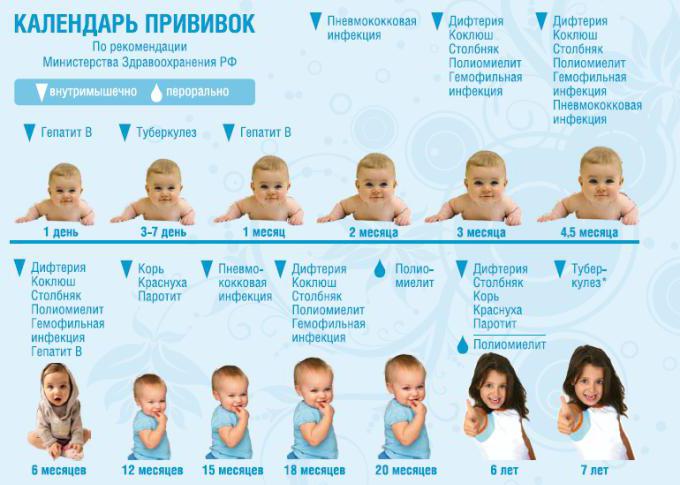
In principle, a centralized assessment and classification of damage from vaccination is possible. This fact shows that the notification obligations set out in the German Infection Protection Act are not yet known to all doctors. In order to increase willingness to report, the medical profession needs greater awareness-raising efforts. In terms of vaccination, the authorities and the medical profession must cooperate closely. However, as reported in the Rhode Island Adverse Drug Reaction Report, reporting frequency can be significantly increased, especially for serious side effects, by improving information and increasing physician attention.
After leaving the maternity hospital, the next visit to the doctor to get vaccinated is expected in a month. At this point, the second vaccination against hepatitis B is carried out. No more injections are given to a healthy child.
Children from the “risk group” will have to undergo the third vaccination against hepatitis B at 2 months. IN real life Doctors inform parents about it. Therefore, we can say that at 2 months they generally do not vaccinate against hepatitis.
It is hoped that the mandatory reporting obligation contained in the Infection Protection Act will also alert clinicians to potential vaccine complications in the future. However, physicians should be aware of the new reporting obligation. This presentation aims to contribute to this. It is also intended to improve the information provided by the medical profession regarding vaccination complications in order to improve the overall detection rate. Because the backlog rate can only be an estimate, the number of suspicious reports has been rejected for the number of doses vaccinated.
Enriched vaccination
The vaccination table for children under one year old necessarily includes all the previously listed diseases. More precisely, vaccines against certain diseases.
At the 3rd month of life, the child will face new vaccinations. Most often they are placed “en masse” - all together at once. During this period, the child receives the following vaccinations:
The scientific assessment of the individual case was put to the fore. Ulrich Heininger, member of the Standing Vaccination Committee, who recommends vaccination recommendations on behalf of the Federal Ministry of Health. In Germany it is also impossible to adequately control potential adverse consequences new vaccination strategy.
“Claiming the incidence of vaccination complications is not possible with current detection strategies.” Question title: Transparency of Vaccine Complications and Vaccine Safety. It is not possible to evaluate the messages received at all. However, it is not possible to inform patient vaccinators about the frequency and type possible effects vaccinations to which they are required. - Prof.
- for whooping cough, diphtheria and tetanus (first) - "DTP", "Pentaxim", "Infanrix";
- for hemophilus influenzae infection - "ACT-HIB", "Hiberix";
- for polio (most often in the form of an injection) - OPV, IPV.
As already mentioned, today these injections are either given simultaneously using different vaccines, or one Pentaxim injection is given, which includes vaccines against whooping cough, diphtheria and tetanus.
The procedure for suspected vaccination injury needs to be better communicated and is often unknown in the medical profession. For example, evaluations carried out by the Paul Ehrlich Institute in collaboration with selected government health authorities have shown that the obligation to report deterioration in health beyond the normal degree of reaction to inoculation under section 6(1)(3) of the Infection Protection Act appears to be , is not known to all interested parties.
There is no scientific basis for the claim that the vaccines approved in Germany are safe or that the risks of vaccinations are calculated. However, without statistical predictability of the risk of inaccuracy, any assessment of risk and benefit is not possible either at vaccine approval or through public recommendation by the Standing Committee on Vaccination or the Vaccination Officer.
Special attention are given to DTP. This vaccination is considered “heavy” and you need to prepare for it. Due to the pertussis component, the child may develop allergies or develop a fever. A little later we will talk about how to properly prepare a child for vaccination.
Second wave
The vaccination table for up to a year, valid in Russia today, does not include many vaccines. Often the process of developing immunity comes down to repeated injections and revaccinations at a certain age. Most often, you have to vaccinate your child three times.
Vaccinations for newborns by month
Since vaccinations are legal terms, primarily bodily injuries for which the vaccine or their custodians must consent, the vaccine cannot be vaccinated in favor of vaccination. The national vaccination schedule is free and compulsory and consists of 19 newly added vaccines: rotavirus, varicella and meningococcus.
Vaccination means protection for the individual, which results in less individual susceptibility to infection. Herd immunity is protection that manifests itself as a decrease in infectiousness in a group. Although children receive most vaccines, adults also need to protect themselves from germs such as tetanus, diphtheria, pneumococcus, influenza and rubella, which also cause illness in adults, many more severely than in children.
At 4.5 months, the “second wave” of the bulk of injections begins. We can say that at this age the child should repeat the vaccination given at 3 months. Accordingly, they will vaccinate against:
- whooping cough;
- tetanus;
- diphtheria;
- polio;
- hemophilus influenzae infection.
It is advisable to choose the vaccination option that was previously given to the child. That is, when using Pentaxim, it is not recommended to vaccinate with separate injections against the listed diseases. 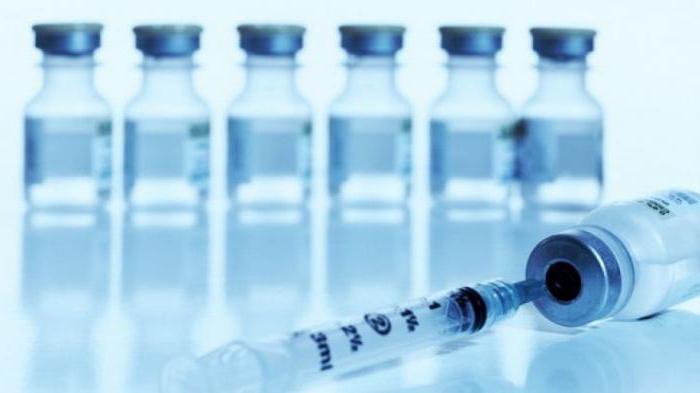
Vaccination against pneumococcal infection
Immunization against meningococcus is expected to begin in the second half of the year. Vaccines are suspensions of live, inactive or dead microorganisms, their fractions or protein particles, which, when administered, induce an immune response that prevents the disease against which it is directed, generating the necessary protection for future exposure to the same.
Vaccines are developed to create immunity to severe forms of the diseases they target. That is, each vaccine is indicated in certain risk groups based on age and other associated pathologies where they are needed, since these groups are more likely to suffer from serious diseases that can cause greater complications or even death. This is why vaccination prevents the adverse development of diseases in humans.
Half year
But the vaccination table for up to a year does not end there. You can forget about vaccination for 1.5 months, up to six months of the child. After this, you must return to the vaccination office. At 6 months the baby is given the following vaccinations:
- from whooping cough, diphtheria and tetanus (third);
- from hemophilus influenzae infection;
- from polio;
- from hepatitis B (third).
No more injections or vaccines will be needed for a long time. The thing is that the main vaccination is carried out in the first six months of the baby’s life. Further, the table of vaccinations for up to a year old child in Russia will continue with procedures performed at 12 months of the baby.
Vaccination calendar in the Russian Federation
How long does immunity last? Vaccines do not produce immunity instantly during administration; when they introduce antigens, they must be recognized immune system and react to form antibodies and produce immunological memory against this vaccine antigen.
If there is viral infection or a wild-type microorganism, then the presence of antibodies produced by the vaccine neutralizes the wild virus. In this way, disease caused by the said virus is prevented. For most people, disease protection does not begin until 7 days after vaccination, and full protection is achieved after about 14 days.
End of the year
By the way, it is during this period that the child will have to be least exposed to injections. Almost all vaccinations up to one year have been studied month by month. The vaccination table will be presented a little later. First you need to understand which vaccines are generally administered to children in the first 12 months of life.
Each child is required to receive only one vaccination per year - MMR. For measles, rubella and mumps. Additionally, the 4th vaccination against hepatitis B is carried out for children from the “risk group”. You don't need to do anything else. This officially ends the vaccination calendar for children in their first year of life.
Additionally, if desired, each parent can vaccinate their baby against chickenpox at 12 months. In addition, flu vaccination is offered. It is performed from the age of 6 months twice, with an interval of 1 month. 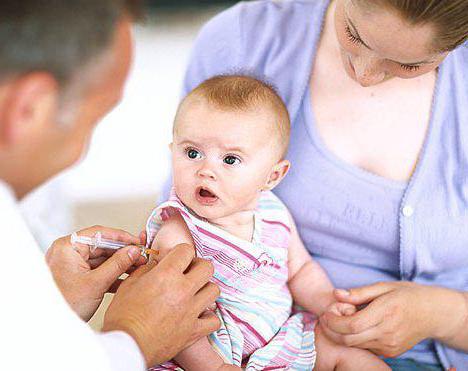
After a year
Nevertheless, national calendar Vaccinations cover a person's entire life. Children and adults are vaccinated according to certain principles. You will have to remember them. After all, no vaccine provides 100% lifelong immunity. It is necessary to carry out revaccination and give repeated injections against certain diseases.
What vaccinations are given up to 3 years of age? The vaccination table proposed below is only suitable for informing parents about upcoming vaccinations for children in the first year of life. But if you supplement it a little, then you can forget about vaccination until the child is 6 years old.
The vaccination table for children under 3 years of age is supplemented by procedures carried out at 1.5 years (18 months). The child receives the following vaccinations:
- from tetanus, whooping cough and diphtheria;
- from hemophilus influenzae infection;
- against polio (live vaccine, usually in drops).
At this stage, you can complete the process of actively vaccinating the child. Ideally, once a year (from 12 months) it is necessary to do the Mantoux test, and, if desired, a flu shot. Next, the national vaccination calendar will continue until the child is 6 years old. The future schoolchild should be vaccinated in the same way as at 1.5 years old. At age 14, a vaccine against polio, tetanus and diphtheria must be administered. And at 18 - only from the last two diseases. This concludes the childhood vaccination calendar. 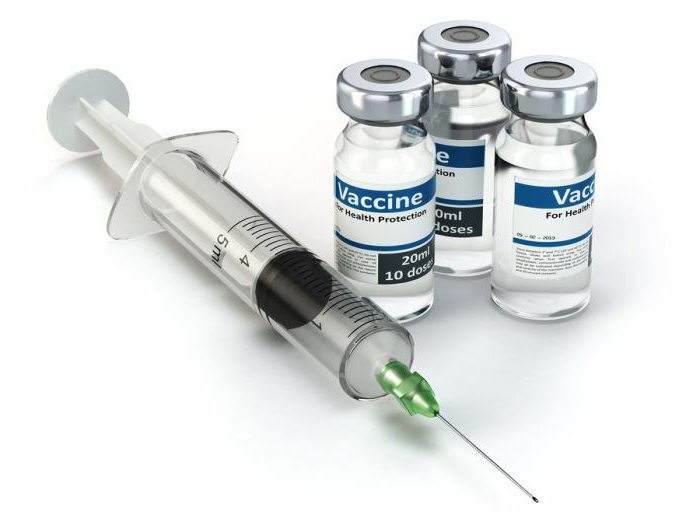
Table to help parents:
| Age/illness | Hepatitis B | Pneumococcal infection | Diphtheria, whooping cough, tetanus, polio, Haemophilus influenzae | Mumps, measles, rubella | Chicken pox |
| first week of life | + | ||||
| 1 month | + | ||||
| 2 months | + | ||||
| 3 months | + | ||||
| 4.5 months | + | + | |||
| 6 months | + | + | |||
| 7 months | + | ||||
| 1 year | + | + |
Please note that the table does not include BCG. But this vaccination cannot be ruled out. In addition, nothing was previously said about vaccination against pneumococcal infection. Today they are trying to make this injection mandatory. But so far it is not included in the national vaccination calendar. Therefore, it cannot be said with certainty that this procedure is always performed.
How to prepare a child
The vaccination schedule for up to a year is now clear. The table given earlier is the current procedure for vaccinating children. It is important to remember that any vaccination is a burden on the body. And you need to properly prepare for it. Especially with an injection for diphtheria, tetanus and whooping cough.
It is recommended to give the child antipyretic drugs, as well as medications for allergic reactions. There are no further significant guidelines for healthy children. Vaccine manufacturers indicate that no preparation is required for any vaccination. 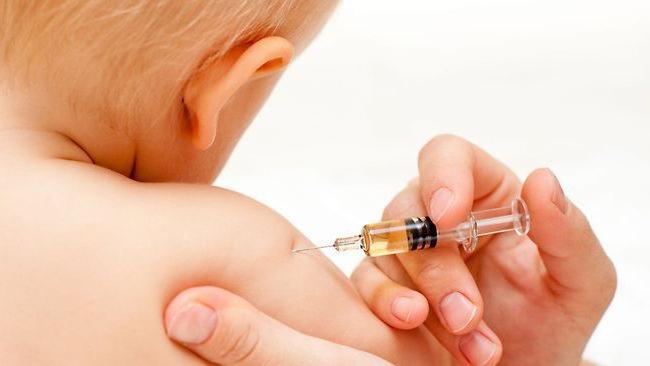
It should be remembered that:
- the baby must be healthy at the time of vaccination;
- any ailment is a reason for medical withdrawal;
- After the illness, at least a month must pass - only then can the baby be vaccinated.
It is noted that a normal reaction to vaccines can be considered:
- increase in temperature (up to 38.5 degrees);
- nausea;
- dizziness;
- general malaise;
- pain at the injection site.
But if you have allergies or swelling, you should immediately consult a doctor. The incident should be reported to the pediatrician. If necessary, he will adjust the current vaccination schedule and cancel one or another vaccination.
The national vaccination calendar will allow every mother to find out the timing of vaccination for her baby. It should always be kept at hand so that you can view the information of interest at any time.
All loving parents provide their child with timely immunization against severe infections.
- Every mother should always have a vaccination calendar on hand.
- Such a schematic table will allow you to see at what age and what type of immunization a baby needs to be given
- In 2017, the vaccination table approved by the Ministry of Health is in force
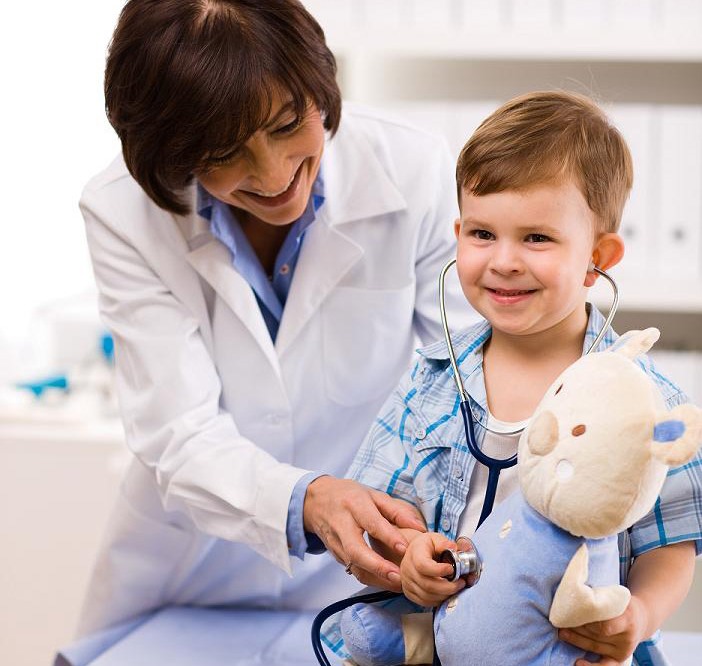
- Preventing a disease is much easier than treating it later
- Treatment takes a lot of money, the parents’ strength and the baby’s health.
- Vaccination allows you to form lasting immunity. Even if a child gets sick, his body can quickly and easily cope with dangerous bacteria
The approved vaccination calendar for Russian children in 2017 was revised by specialists and adopted for use in medical institutions. Immunization protects children from the following diseases:
- Viral hepatitis B— the following immunoprophylactic vaccines are registered in Russia: Regevak B, N-B-VAX II, Engerix-B, Eberbiovak HB and Sci-B-Vac
- Tuberculosis- the Calmette-Guerin bacillus, which was previously in the ampoule, is introduced
- Diphtheria, whooping cough and tetanus— in Russia the following vaccines are used for immunization: drugs D.T.Kok and Tetrakok, DTP (Russian drug), Belgian drug Tritanrix-HB, D.T.Vac, ADS, Imovax D.T. Adult, ADSM, AS (T), AD-M (D)
- Haemophilus influenzae infection— Hib vaccine “Hiberix”. Injected intramuscularly - for children into the quadriceps muscle of the thigh, for older children - into the deltoid muscle of the shoulder
- Poliomyelitis - " Imovax Polio is administered by injection. Most often, drops are used for vaccination. Their administration is more convenient than an injection
- Measles, rubella, mumps - immunization is carried out using Indian and domestic drugs: Ruvax, Ervevax, Priorix, MMP-II
- Flu— Grippol, Grippol plus
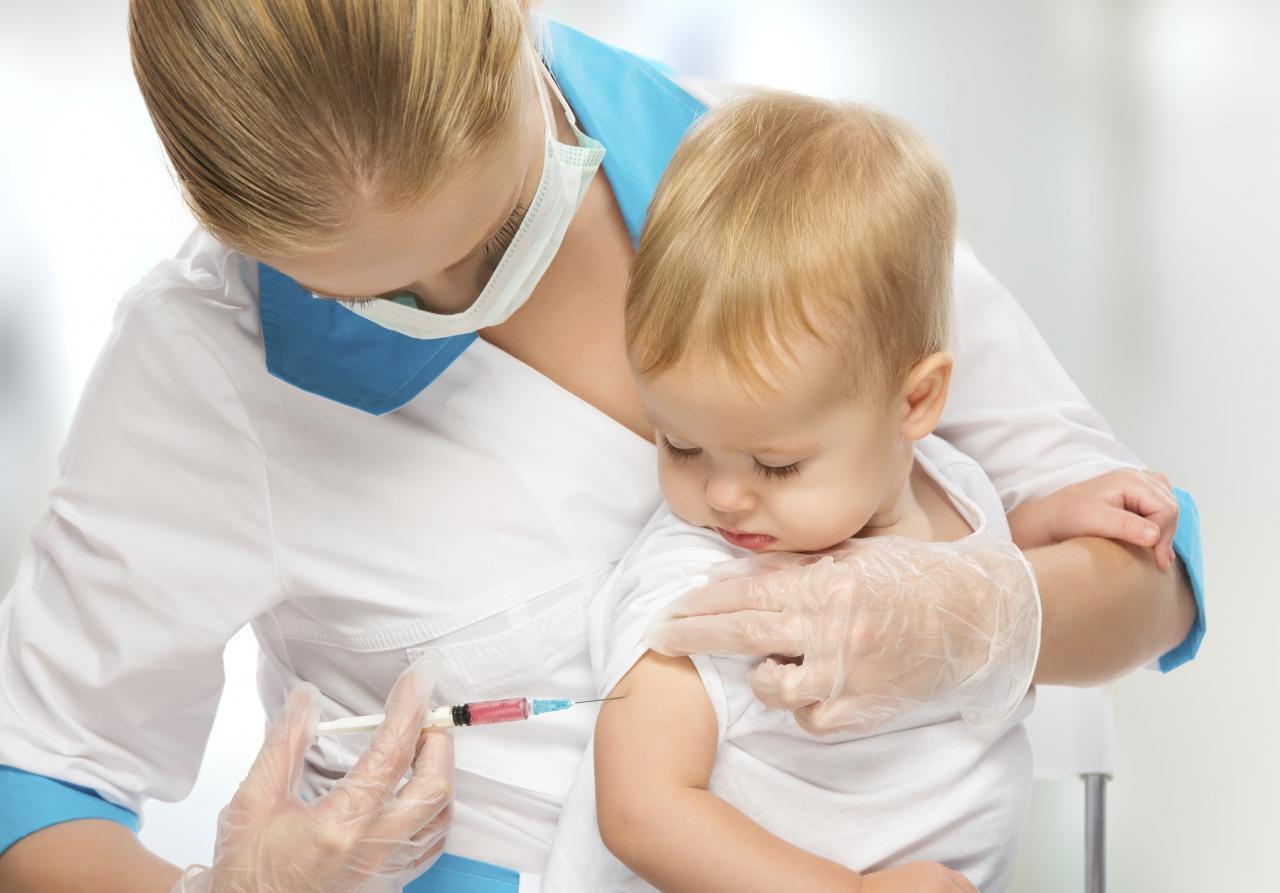
Important: This is a list of vaccinations that are carried out free of charge within the prescribed time frame, taking into account the age of the child. But parents can do them for their child for a fee, at any medical center, after consulting a pediatrician at that center.
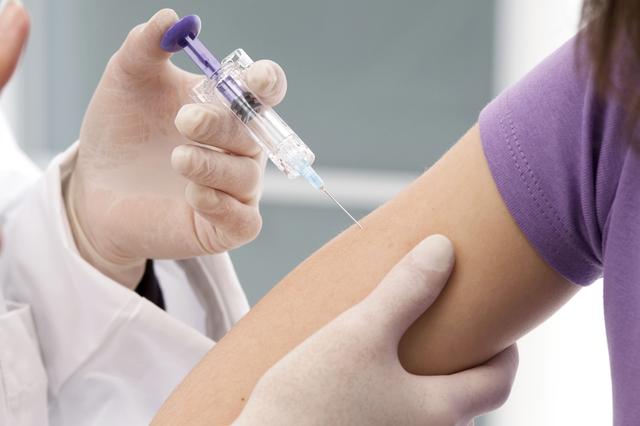
- All vaccinations are done free of charge at the clinic at your place of residence
- Parents must strictly follow the immunization schedule, if there is no contraindication for its implementation
- Schematic table of vaccination is minimal list vaccinations, which are mandatory. This list can be expanded at will, with the permission of the pediatrician after consultation.
- Vaccinations that are not included in the free list you'll have to pay for it. These include vaccination against rotavirus infection, meningococcal infection, chickenpox and HPV (human papillomavirus). Many of these diseases are dangerous for babies, and therefore they are recommended for children
- There is a risk of complications that may occur after immunization. Doctors don’t talk about this, but parents should know that their baby should not be taken to the clinic for vaccination if he has signs of ARVI. In this case, it is better to postpone vaccination
- Your pediatrician can help you assess your risk. from vaccination and make the right decision
- Many parents think that after immunization their child will definitely have a fever.. But not all children, for example, get such a reaction from the DTP vaccine. For some children, the post-vaccination period is easy and without complications.
- Also, almost all parents are sure that breast-feeding protects against diseases. But this takes into account that the mother is vaccinated, or has had these diseases and has a sufficient number of antibodies. However, after the end of breastfeeding, the baby will not have immunity and his body will be vulnerable to the appearance of serious diseases. Therefore, vaccinations are done in advance so that the child develops immunity.
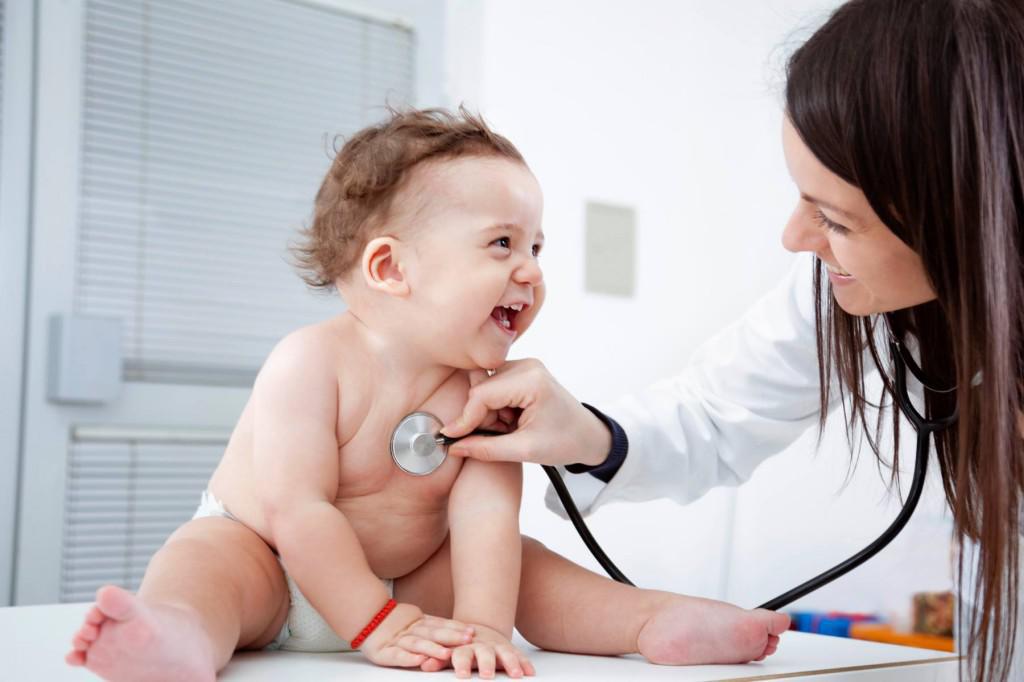
Even more interesting and useful information, you can read in this article. Thanks to this article, you will learn what else parents need to know about vaccinations and vaccination of children in order to make a choice in favor of immunization and possible complications after it.
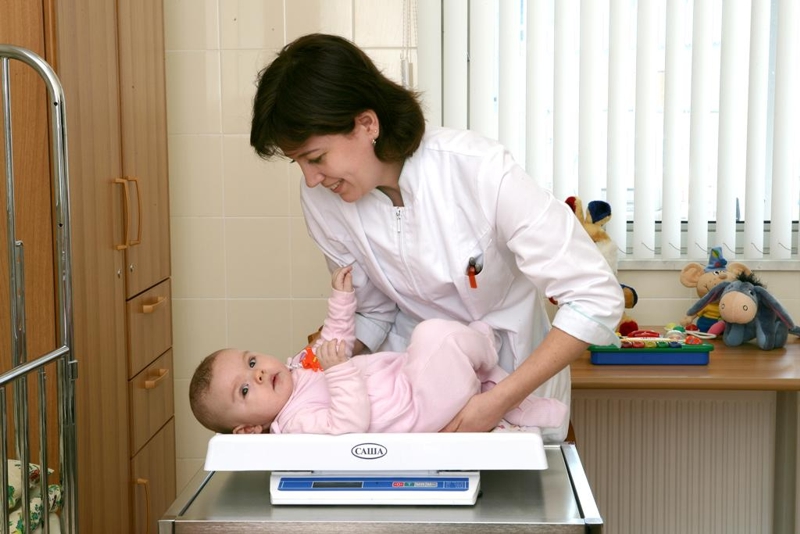
During immunization, artificial biological material is introduced, which does not cause the onset of disease, since it is specially prepared for vaccination. Vaccination can be carried out for preventive purposes, as well as for the treatment of diseases.
Therefore, the 2017 vaccination calendar should be a desk calendar for all parents.
Table:
| Age of the child (months, years) when he needs prophylactic immunization | What disease is vaccinated against? | Documents for correct implementation professional immunization |
| Newborn babies in the first 24 hours after birth | First immunization against viral hepatitis B | It is carried out for all children according to the instructions, including children from risk groups: if the mother is a carrier of the hepatitis B virus or suffered this disease in the third trimester of pregnancy; if the mother did not provide the results of examination for markers of hepatitis B to the maternity ward; if the child has drug-addicted parents who are carriers of viral hepatitis B and chronic hepatitis |
| Newborns 3-7 days of birth | Prophylactic immunization against tuberculosis | Gentle first immunization - special vaccines are used to prevent this disease |
| Children at 1 month | Second immunization against hepatitis B | Conducted for all children, including children at risk |
| Children at 2 months | The third stage of prophylactic immunization against hepatitis B | Conducted for all children, including children at risk |
| Children at 3 months | The first stage of immunization against diphtheria, whooping cough and tetanus | Available for all children of this age |
| Children from 3 to 6 months |
The first stage of prophylactic immunization against Haemophilus influenzae infection | It is carried out for children who belong to risk groups: if the child has an immunodeficiency state or certain anatomical defects that can lead to infection with this disease; if the child has an oncohematological disease; HIV-infected children and children born to HIV-infected mothers; children who are in specialized closed boarding schools or health institutions. |
| Children at 4.5 months |
First stage of immunization against polio Second stage of immunization against diphtheria, whooping cough and tetanus Second stage of immunization against Haemophilus influenzae Second stage of immunization against polio |
All these vaccinations are carried out according to the instructions for children of this age group |
| Children at 6 months |
Third stage of immunization against diphtheria, whooping cough and tetanus The third stage of immunization against viral hepatitis B The third stage of immunization against Haemophilus influenzae Third stage of immunization against polio |
These vaccinations are given to children of this age group who received vaccinations as planned. |
| Children at 12 months |
Immunization against measles, rubella, mumps The fourth stage of immunization against hepatitis B |
Vaccination is carried out in accordance with approved instructions |
| Children at 18 months |
First revaccination against diphtheria, whooping cough and tetanus First revaccination stage against polio Revaccinated stage against Haemophilus influenzae infection |
Vaccinations are carried out for children according to instructions to prevent these diseases in this age group. |
| Children at 20 months |
Second stage of polio immunization | Conducted for children based on the instructions of the Ministry of Health |
| Children aged 6 | Revaccination stage against measles, rubella and mumps | Carried out on the basis of instructions for this age group |
| Children 6-7 years old |
Second revaccination stage against diphtheria and tetanus | It is carried out on the basis of instructions for the use of toxoids with a minimum content of antigens for children of this age |
| Children aged 7 |
Revaccinated stage against tuberculosis | The child is first given a Mantoux test. If the result is negative, then you can carry out this type revaccinations in accordance with the instructions for children of this age |
| Children aged 14 |
Third revaccination stage against diphtheria and tetanus Third revaccination stage against polio |
Carried out on the basis of instructions for use of the vaccine for children of this age |
| Adult children aged 18 |
Revaccinated stage against tuberculosis Revaccinated stage against diphtheria and tetanus |
Performed on tuberculin-negative children of this age Carried out on the basis of instructions for use every 10 years from the date of the last vaccination |
| Children from 1 year to 18 years | Immunization against viral hepatitis B | Conducted in accordance with the instructions: the first dose at the start of vaccination, the second dose - a month later, the third dose 5 months after the second dose. |
| Children from 1 to 18 years old |
Immunization against rubella | It is carried out for children who have not had this disease and have not been vaccinated previously, as well as for girls from 18 to 25 years old (who have not been sick and have not been vaccinated before) |
| Children from 6 months, schoolchildren and university students | Flu immunization | Carrying out on the basis of instructions for use |
| Children aged 15-17 years |
Immunization against measles | It is carried out on the basis of instructions for use for children who have not had this disease and have not been vaccinated before |
Important: Vaccination is carried out only with registered drugs in our country. Parents can be sure that if an imported vaccine is given in a clinic, it means it has been tested by specialists from the Russian Ministry of Health and is completely safe for the child.
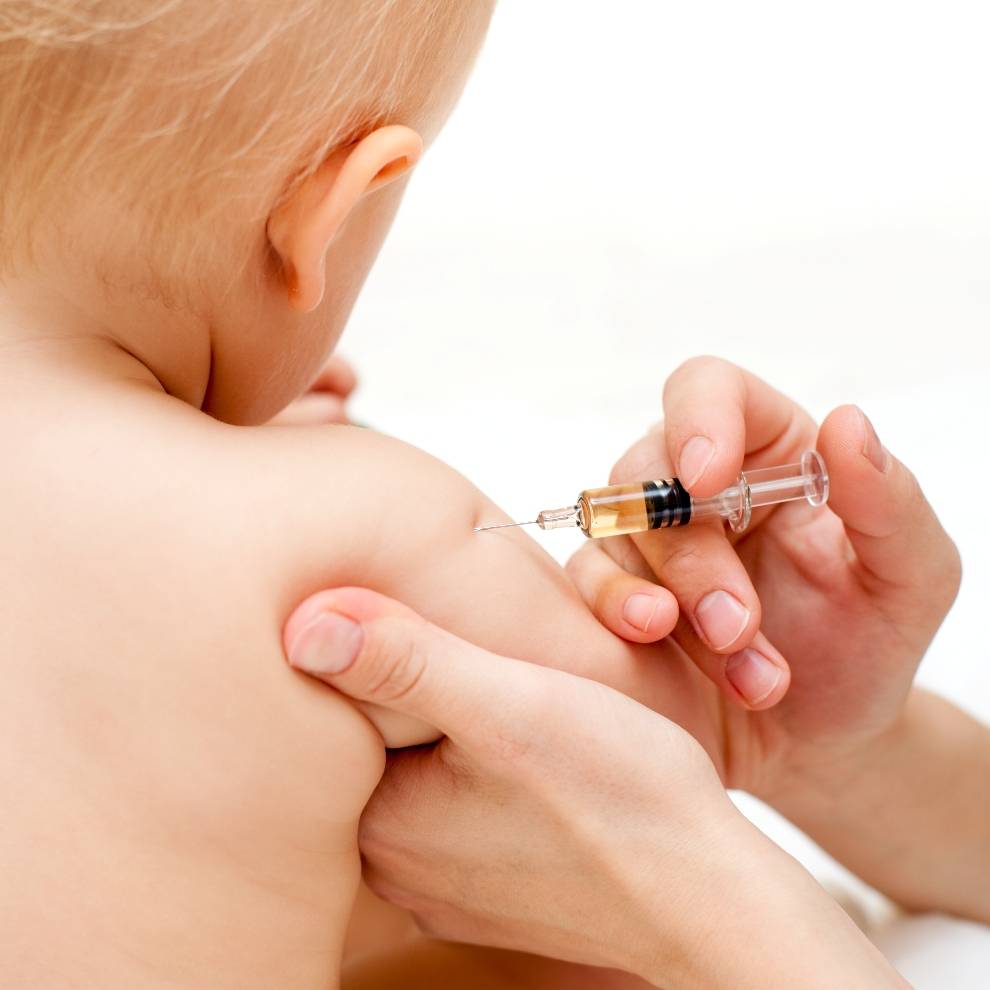
Many mothers panic when they find out that they and their child will have to come to the clinic every month for vaccinations until they are 12 months old. The question immediately arises: why so many injections, because diseases can be cured with medications?
Important: Preventing a disease is much easier than treating it! Especially such complex and serious diseases as those for which vaccination is carried out.
The complete Russian vaccination calendar 2017 for children under 1 year of age can be found in the table above.
Tip: Save this article with the table on your PC or laptop so that you can view the immunization period at any time.
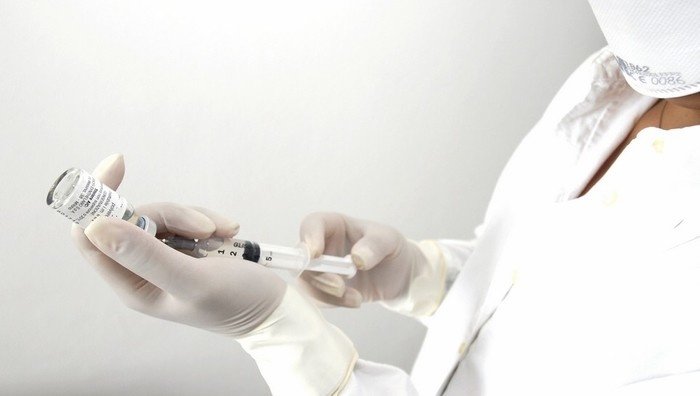
Now the baby has already grown up. He is one year old, but don’t forget to visit the clinic and pediatrician when the time comes to get vaccinated.
The list of vaccinations up to 2 years of age includes the first stage of revaccination against diphtheria, whooping cough, tetanus, polio and hemophilus influenzae. It is carried out at 18 months. At 20 months, a second booster vaccination against polio is necessary.
For more detailed information about vaccinations in the second year of a child’s life, see the table above.
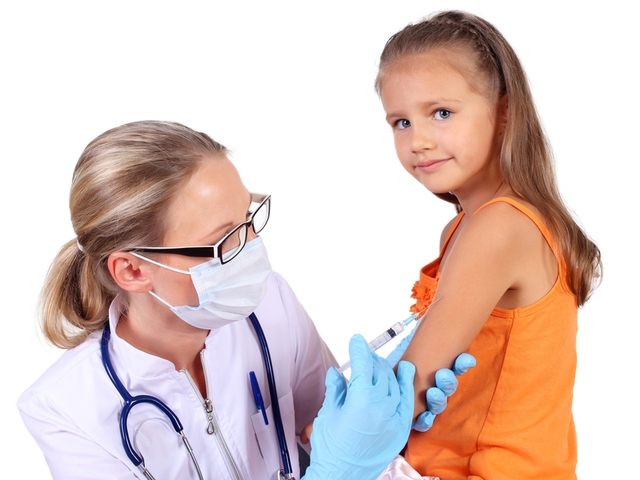
A three-year-old child should have everything done DTP vaccinations, from polio, hepatitis B, measles, rubella, mumps. Also by this time, the stage of revaccination of vaccinations against diphtheria, whooping cough, tetanus, polio and hemophilus influenzae ends.
You can see all the timing of immunization in detail in the Russian vaccination calendar 2017 for children under 3 years of age, which is located above.

Many parents tend to trust doctors. Therefore, they regularly vaccinate their children. In addition, they provide paid vaccinations, which are not on the list of free ones.
What vaccinations are required for children? All loving parents should know their list if they want their baby to grow up healthy and strong. Mandatory immunization is carried out against the following diseases:
- Tuberculosis is a dangerous infection that affects the lungs and other internal organs
- Hepatitis B is a disease that affects liver cells. The chronic form of this disease leads to cirrhosis
- Poliomyelitis is a dangerous virus. May cause paralysis if ingested
- Diphtheria is a disease of viral etiology that affects the respiratory tract, nervous system, heart and adrenal glands
- Whooping cough is an infection with a severe course in the form of paroxysmal cough
- Tetanus - if the causative agent of this infection enters the body, a person experiences convulsions and suffocation as a result of damage to the central nervous system
- Measles - affects the mucous membrane of the nose and throat, the body temperature rises and a rash appears. If treatment for this disease is not started in a timely manner, complications may appear.
- Rubella is a viral infection that occurs with enlarged lymph nodes and the appearance of a rash.
- Mumps - affects the salivary glands and nervous system. Boys experience testicular damage, which can lead to infertility
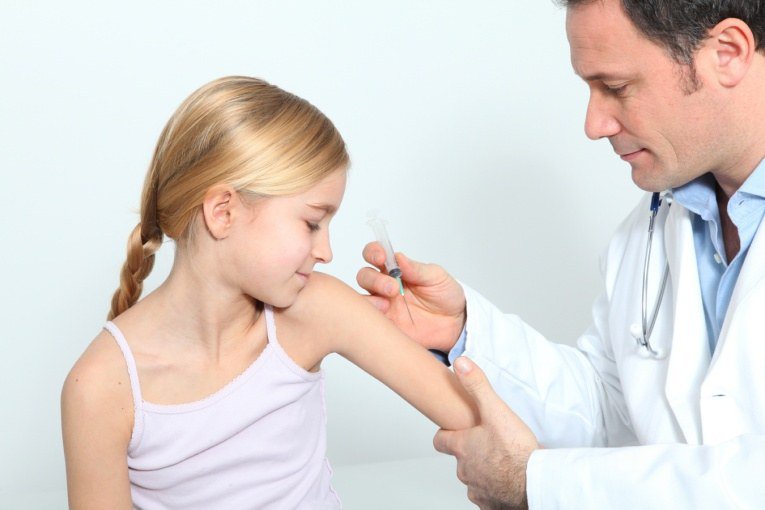
Each country has its own immunization calendar. Installed in Kazakhstan certain deadlines vaccination, but in this country children are vaccinated against the same infections as in the Russian Federation.
- Children are vaccinated against tuberculosis on the first day of life, at 6 and 12 years of age.
- For hepatitis B - on the 1st day of life, at 2 months, at 4 months
- Against polio - on the 1st day of life, at 2, 3 and 4 months
- DTP (whooping cough, diphtheria and tetanus) - at 2, 3, 4 months, at 18 months
- DDS (diphtheria, tetanus) - at 6 years
- BP-m (diphtheria) - at 12 years old
- ADS-m (diphtheria, tetanus) - at 16 years old and then every 10 years
- Measles - at 12-15 months, at 6 years
- Mumps - at 12-15 months, at 6 years
- Rubella - at 6 years old, at 15 years old
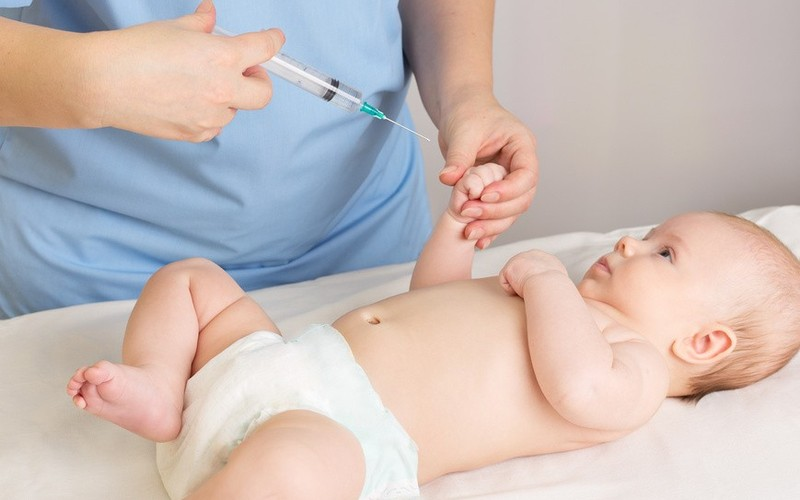
In Ukraine, children are given the same vaccines as in Kazakhstan and Russia.
- Hepatitis B - on the 1st day of life, at 1 month, at 6 months
- Tuberculosis - on the 3-5th day, at 7 years
- Whooping cough, diphtheria, tetanus - at 2 months, 4 months, 6 months, 18 months, 6 years, 16 years and then every 10 years
- Poliomyelitis - at 2 months, at 4 months, at 6 months, at 18 months, at 6 years, at 14 years
- Haemophilus influenzae infection - at 2 and 4 months, at 12 months
- Measles, rubella, mumps - at 12 months

All types of immunization are carried out after the child has been examined by a doctor and passed the necessary tests. After all, there are contraindications when carrying out vaccinations.
Many parents wonder: is there new vaccination in the 2017 vaccination calendar? There are no new vaccinations this year. Although immunization against hepatitis B is considered an innovation, it began to be administered to children in recent years.
Many doctors are pushing for vaccination against rotavirus infection to be included in the list of mandatory ones, since more than every child suffers from such diseases with the onset of cold weather. But the Ministry of Health does not yet include this vaccination in the list of mandatory ones.



